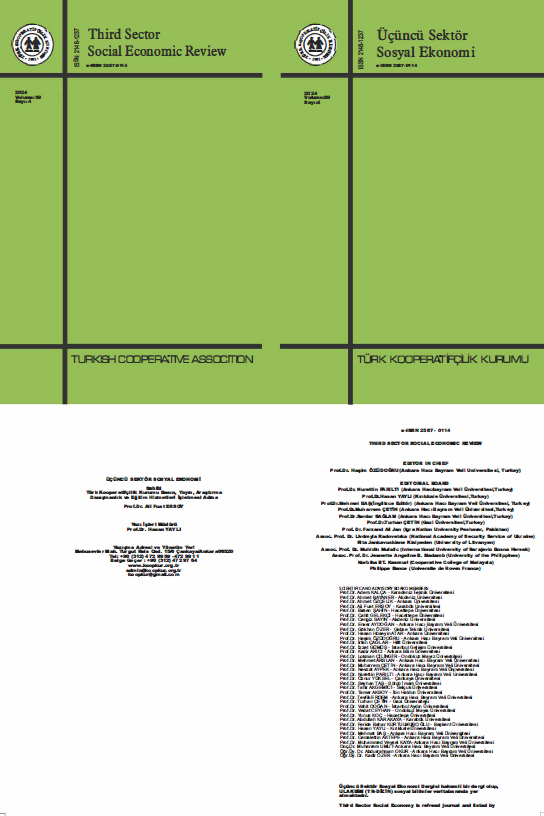DETERMINATION OF MARKETING STRATEGIES OF WOMEN ENTREPRENEUR COOPERATIVES: THE EXAMPLE OF AMASYA PROVINCE
DOI:
https://doi.org/10.15659/3.sektor-sosyal-ekonomi.24.10.2476Keywords:
Women Entrepreneur Cooperatives, Marketing Strategies, Amasya, Local Economy, Women EntrepreneurshipAbstract
The aim of this research is, learning the reality of women entrepreneur cooperatives extended in Amasya province, about their marketing strategies and understanding problems in the realm of marketing processes for creating improvements. In this study 11 chairmen or senior managers of the women entrepreneur cooperatives in Amasya province were interviewed except for the two cooperatives which decided to terminate, among the 13 cooperatives in total. Possible activity fields of the cooperatives include drying of vegetables and fruits, weaving and manufacture of exclusively local products. Thus, the findings of the designed research indicate a lack of adequate information and resources in the fields of marketing and branding among many women entrepreneur cooperatives. The marketing initiatives are confined to the markets available in the municipality and indeed the usage of social media accounts and advertisement expenses are relatively restricted. But still, the cooperatives attempt to build competitive prices through the integration of some percentages of profit on the cost by using the price models. Apart from all these, the major problems are lack of capital base, ignorance, lack of marketing proficiency and efficient exploitation of the distribution networks. The concluded marketing challenges of the cooperatives are suggested on the findings of the study, and the study also shows that women entrepreneur cooperatives are in dire need of training and support programs to enhance their marketing strategies. In this regard, the challenges affecting the marketing process of cooperatives include; lack of capital/adequate funds, lack of training on the marketing aspects as well as lack of knowledge and/or experience in marketing, inefficient marketing utilisation of the channel and lastly, inadequate/newly participating in advertising activities. Lastly, at the end of the interviews it was noted that while many cooperatives adopted a number of practices in the selection of products and management of price strategies, they relied most on cost-based price strategies. It is suggested that they should be assisted in terms of access to e-commerce, in advertising and promotional campaigns, marketing trainings have to be regularly conducted and the state grants have to be raised.







